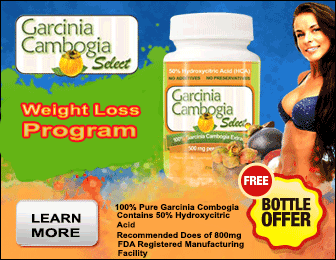I was a young child during World War II. To make up for food shortages the government asked citizens to plant Victory Gardens. Like other families on our block, we had a garden in a vacant field. Weeding our Victory Garden was more than a war time activity, it was a social activity.
Families caught up on news as they planted and harvested their crops. Picking vegetables - fat orange carrots, turgid Swiss chard, and giant potatoes - seemed miraculous to me. One day some older kids built a fire on a bare plot and we roasted potatoes. We ate the blackened potatoes without any butter or salt, and I can still remember how good they tasted.
Vegetables fed the nation during World War II. We were a fit nation then because people walked to conserve gas, ate little protein (steak was a rarity), and were restricted by food stamps. No obese people lived on my block. In fact, I didn't know any obese people. How things have changed.
America is no longer a fit nation, it is a fat nation, and the obesity statistics are alarming. According to the President's Council on Fitness and Sports 37% of Americans aren't physically active. More than 108 million Americans are either obese or overweight. Teens and younger kids are developing type 2 diabetes, formerly an adult disease.
What can Americans do? We can eat more vegetables. The United States Department of Agriculture (USDA) has posted an article on www.MyPyramid.com titled Why is it Important to Eat Vegetables? The reasons include reducing the risks of type 2 diabetes, stroke, mouth, stomach, and colon-rectum cancer, and heart disease. In other words, eating vegetables is a way to protect your health.
Mayo Clinic has posted an article about the energy density of vegetables on its website. The article, Energy Density and Weight Loss: Feel Full on Fewer Calories, tells how energy density works. Many vegetables have low energy density, Mayo says, and you can eat large servings of them, feel full quickly, and because you feel full, consume fewer calories.
Green vegetables are a good example. One serving of green beans, asparagus, or broccoli contains about 25 calories, according to Mayo Clinic. This number refers to plain vegetables, not vegetables drenched in butter or smothered in cheese sauce. Lightly dressed salads also have low energy density.
The Centers for Disease Control (CDC) says most of the space on your dinner plate should be filled with vegetables, fruits, and whole grains. Eating lots of vegetables can help you reach and maintain a healthy weight, according to the CDC. To learn more log onto the CDC Homepage and print out How to Use Fruits and Vegetables to Help Manage Your Weight.
Vegetables and daily walking have helped me to keep a healthy weight. I love vegetables, probably because of my childhood Victory Garden experience. But many Americans grimace when they think about fixing vegetables or eating them. Why? It takes time to wash and slice vegetables and Americans are short of time.
Many of us don't know how to cook vegetables. A serving of limp, gray-green beans is hardly appealing. Carrots cooked until they are mush are a turn-off. How can we get Americans to eat more vegetables? We can explain cooking techniques.
Steamed vegetables, for example, retain their color and crispness. The same is true of stir fried vegetables. I stir fry vegetables in a cast iron skillet. The skillet is so well seasoned that I need only a tablespoon (or less) of olive oil.
Americans also need to learn how to season vegetables. Though I rarely cook with salt, sometimes I sprinkle light salt on vegetables. Most of the time I season vegetables with lemon pepper or fresh lemon juice. I also season them with fresh thyme, rosemary, basil, and garlic.
Involving kids in meal preparation is another way to get Americans to eat vegetables. Older kids can cut the tips off of string beans, peel and slice carrots, or slice mushrooms. Younger kids can get pans out of the cupboard, measure ingredients, and set the table.
Trying new vegetables, such as jicima, may also help Americans to eat more of them. Fresh vegetables add sparkle to any meal. We don't have Victory Gardens any more, but we can eat vegetables to prevent disease and maintain a healthy weight. Put vegetables at the top of your grocery list today!
Copyright 2006 by Harriet Hodgson
http://www.harriethodgson.com
Harriet Hodgson has been a nonfiction writer for 27 years and is a member of the Association of Health Care Journalists. Before she became a health writer she was a food writer for the former Rochester Magazine in her home town of Rochester, MN. Her 24th book, Smiling Through Your Tears: Anticipating Grief, written with Lois Krahn, MD, is available from http://www.amazon.com. A five-star review of the book is posted on Amazon. You will also find another review on the American Hospice Foundation website under the School Corner heading.












No comments:
Post a Comment